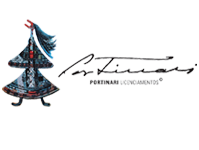History of the Portinari Project Art, Education and Social Inclusion Center
In 1997, the Portinari Project's Art and Education Center was established with the aim of making Candido Portinari's works accessible to a wider public. Faced with the challenges inherent in organizing exhibitions with original pieces, the Portinari Project dedicated itself to research to acquire knowledge about technologies that would make it possible to produce high-quality reproductions of the artist's works. By creating excellent replicas, the Art and Education Center has developed a repertoire of thematic exhibitions, including titles such as 'Portinari's Brazil', 'Portinari - Art and the Environment', 'Portinari - Art and Science', 'War and Peace', 'Drummond - Portinari - Poetry and Painting', 'Portinari Time', 'Portinari, Images of Brazil' and 'Portinari - The Painter of Peace'. Each of these exhibitions has toured or is currently touring various regions of Brazil, reaching communities that often lack access to the cultural wealth produced in the country.
The Itinerant Exhibitions play a significant role in bringing Candido Portinari's collection closer to the various regions and realities of Brazil, serving communities, public and private educational institutions, as well as cultural spaces. During these exhibitions, art education activities are conducted for children and young people, using various artistic techniques and languages to enrich the dialog and connect diverse audiences to Portinari's collection in a reflective, creative, and playful way.
The Portinari Project also organizes seminars aimed at extracurricular training for education professionals. These seminars aim to prepare educators to introduce new experiences and reflections into their classrooms, providing tools so that the themes and experiences covered during visits to the exhibitions are not restricted to the time and space of these events, but are perpetuated, allowing teachers to continue to explore the proposed themes in their educational practices. In the words of João Candido Portinari:
Portinari's work is not just about colors and shapes, nor does it express abstractions. All of it is deeply committed to social and human values. It is a powerful ethical, humanistic and civic message, which rises up against violence and injustice and calls for peace, fraternity, community spirit, respect for people and life. The mission of the Portinari Project's Art Education and Social Inclusion Center is to bring Portinari's message to children, young people and the general public, through his works and also his thoughts, expressed in the texts and poems that the painter bequeathed to us. The immediate identification of children, young people and adults with the artist's works is clear. They recognize themselves in the artist's representations and see their own stories in the works. These bonds of belonging help to demystify art and instigate the desire to make their own representation. Bringing children, young people and adults closer to art opens up new worlds, new aesthetics, new points of view, new ways of perceiving reality and interacting with the world.
In this context, the Portinari Project dedicated constant efforts to directing the artist's works towards the search for our cultural identity and the preservation of national memory. This initiative has contributed significantly to a comprehensive socio-cultural approach, aimed at a deeper understanding of the Brazilian historical-cultural process and its complexities.
In 2022, the Art and Education Center underwent a renovation by proposing to connect Portinari's work with the UN's Sustainable Development Goals. This initiative aims to contribute to strengthening democracy in the country by promoting human rights education, with a focus on citizen education, full respect for human rights and the defense of social and environmental justice. In addition, the Center carries out emancipatory, critical, problematizing, inclusive, intercultural and democratic education practices. To reflect this broader approach, the department was renamed the Department of Art, Education, Inclusion and Belonging. This structural change was carefully planned to optimize resources and align operations with the mission of using art and the "Portinarian" philosophy as instruments for social transformation.
Art, Education, Inclusion, and Belonging
The interaction between art, education, inclusion and belonging is intricate and encompasses many facets. Each of these elements plays a crucial role in shaping individuals and building a more equitable and inclusive society. Let's take a look at how these concepts connect:
1. Art and Education:
1. Art plays a crucial role in education, helping to develop creativity, personal expression and aesthetic sensitivity.
2. Through art, students can learn to observe, analyze and interpret the world around them in different ways, which contributes to the development of critical and cognitive skills.
3. Art education can promote critical thinking, problem solving and effective communication, skills that are useful in many aspects of life.
2. Art and Inclusion:
1. A arte tem o poder de incluir pessoas de diferentes origens, habilidades e experiências. Ela oferece uma forma universal de comunicação que transcende barreiras linguísticas e culturais.
2. Artistic activities can be adapted for people with physical, sensory or cognitive disabilities, making art accessible to a wider audience.
3. Art can also be a powerful tool for raising awareness of issues related to inclusion and diversity, promoting understanding and empathy.
3. Art and Belonging:
1. Art can help people feel part of a community or culture. It can celebrate cultural identity and strengthen the sense of belonging to a group.
2. Through art, the stories and experiences of marginalized groups can be shared and celebrated, contributing to the empowerment and validation of these communities.
3. Through art, the stories and experiences of marginalized groups can be shared and celebrated, contributing to the empowerment and validation of these communities.
4. Education and Inclusion:
1. Inclusive education aims to ensure that all students, regardless of their individual differences, have equal access to learning and development.
2. This includes adapting teaching methods, materials and environments to meet the needs of students with disabilities, learning difficulties or other diverse characteristics.
3. Inclusion in education is not just limited to students with disabilities; it also involves recognizing and respecting cultural, ethnic, religious, gender and other differences.
Art plays a vital role in the educational sphere, in promoting inclusion and in strengthening the sense of belonging of individuals and communities. It proves to be a powerful tool for celebrating diversity, establishing meaningful connections and inciting positive transformations in society. In turn, inclusive education seeks to ensure that all the benefits of art and education are accessible to everyone, regardless of their uniqueness.






